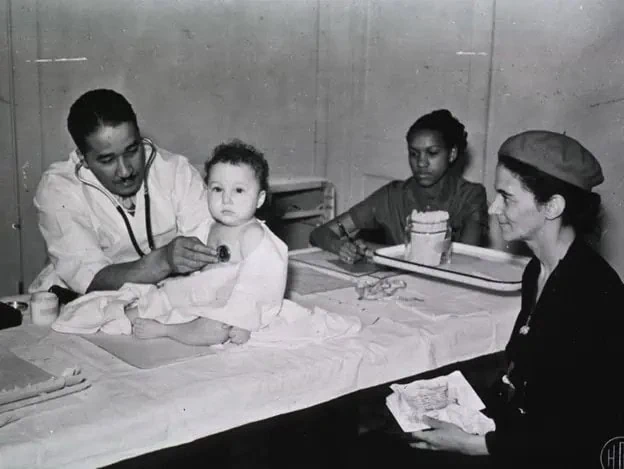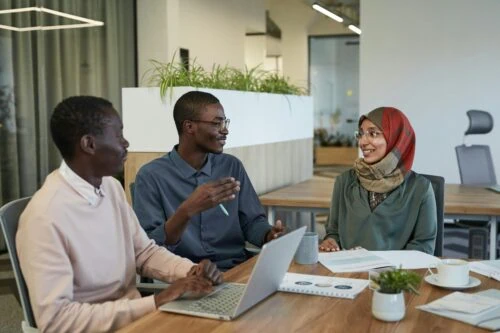Welcome to an eye-opening journey through America’s past and present. This guide is more than just a history lesson. It’s a road map for understanding the struggles and victories of diverse communities. Communities that make up the heart and soul of our nation.
If you’re starting your career journey, this guide offers crucial context. It’s about the workplace and society you’re entering. Understanding the Civil Rights Movement is critical. It’s not just about knowing where we’ve been. It’s about realizing where we’re going together.
This guide aims to inspire. We’ll explore how diverse groups have fought for equality. We’ll delve into their triumphs, ongoing struggles, and dreams for the future. Most importantly, we’ll show you how embracing diversity can enrich your career and life.
So, let’s begin. Whether you’re seeking opportunities or just eager to learn, this guide is your starting point. Embrace it, and let’s forge a more inclusive future.
America: A Nation of Minorities
America is often described as a diverse land. This is true. Many different cultures, languages, and histories fill this country. Yet, unity in such diversity is complex. The story of America is also the history of the American Civil Rights Movement. This movement aimed to ensure equality for all its people, especially minorities.
Despite the efforts, struggles persist. For example, minority students face various challenges. These include access to education and fair treatment. Understanding these difficulties is crucial. For more insight, consider reading about the challenges faced by minority students. It sheds light on the hurdles they tackle daily.
But why does this matter? Because the essence of America’s identity is its diversity. Each group’s unique experiences enrich the evolving Civil Rights landscape. And yet, they underline the need for continuous action and awareness. As the nation moves forward, it’s important to remember its foundation—built on the promise of equal opportunities for all who call it home.
The Roots of the Civil Rights Movement
The Civil Rights Movement has deep roots in America’s history. It sought to end racial discrimination and achieve equality for African Americans. Leaders like Martin Luther King Jr. played pivotal roles. Their work led to significant legal and social changes. Key victories like the American Civil Rights Act of 1964 are memorable milestones.
However, this movement wasn’t just for African Americans. It paved the way for other minority groups to fight for their rights. Latinos, Asian Americans, and others found inspiration and strategies within this movement. They all contributed to the evolving landscape of civil rights in America.
The movement’s influence extends beyond America. It inspired global actions for equality and justice. Thus, the Civil Rights Movement remains a cornerstone of America’s identity as a Nation of Minorities. Its principles and struggles underscore America’s commitment to justice for everyone.
Successes of the Civil Rights Movement
The Civil Rights Movement achieved many triumphs. It changed laws and minds alike. Here are a few:
- The Civil Rights Act of 1964 made discrimination illegal.
- The Voting Rights Act of 1965 ensured minorities could vote.
- Desegregation of schools became a reality, even though it took time.
These victories had a significant impact. Also, they showed the power of peaceful protests and the strength of unity. Yet, the work didn’t stop there. As a result, new paths opened for later rights campaigns.
So, the Civil Rights Movement didn’t just fight for today’s betterment. Instead, it laid the groundwork for future struggles and wins. This groundwork helps everyone in America. It pushes us towards a truly equal society.
Even now, the impact of this movement is evident. It showed that change is possible. But it also reminds us that progress needs ongoing effort. For everyone to enjoy equal rights, the journey must continue.
Challenges Still Facing Minorities Today
Despite past wins, today’s struggles remain real. For many, equality feels out of reach. Some current challenges include:
- Police brutality and racial profiling are significant concerns.
- Immigration policies impact millions, fueling fear and uncertainty.
- Hate crimes have surged, affecting various communities.
Moreover, technology brings new issues. AI and diversity discussions reveal biases in algorithms. This affects hiring, lending, and beyond.
Additionally, education disparities persist. Support for minority students is vital. It’s not just about access but also about fair treatment. To understand more, consider the U.S. Department of Education’s work on equity.
So, while the Civil Rights Movement laid solid groundwork, the fight against inequality continues. Each step forward requires renewed commitment and action. Together, we can tackle these challenges, ensuring a fairer society.
The Latino Community’s Journey
The Latino community in America has a rich history. Yet, their journey towards equality has been challenging. Key points include:
- Facing discrimination in jobs and education.
- Cultural assimilation pressures are intense.
- Immigration issues are a constant battle.
Similarly, the Chicano Movement in the 1960s was vital. It aimed at gaining civil rights for Mexican Americans. Also, it sought respect for their culture. This movement echoed the broader Civil Rights Movement, uniting for change.
Today, Latinos continue to advocate for their rights. They play a significant role in the evolving Civil Rights landscape. Organizations work towards better policies and representation. For more, the League of United Latin American Citizens (LULAC) provides valuable resources.
So, progress has been made. Yet, more work is ahead. As a united front, continued advocacy can bring further achievements.
AAPI’s Continuous Fight for Equality
The Asian American and Pacific Islander (AAPI) community is diverse. Yet, they share everyday struggles in America. Key issues include:
- Racial discrimination and stereotypes.
- Hate crimes, especially during COVID-19.
- Visibility and representation in media and politics.
Historically, laws like the Chinese Exclusion Act harmed the community. During World War II, Japanese Americans were interned. These events are painful but essential parts of history.
Recently, the rise in anti-Asian sentiment requires urgent action. Efforts by groups like Stop AAPI Hate are crucial. They push back against racism and promote understanding.
As with other groups, the AAPI community’s fight is ongoing. Their experiences add vital voices to the evolving civil rights landscape. With solidarity, progress is possible. The goal is a society where everyone is respected.
LGBTQ+ Milestones and Ongoing Struggles
The LGBTQ+ community has seen essential victories. Notable among these is the legalization of same-sex marriage in 2015. It was a massive win for civil rights. Yet, challenges persist, including:
- Transgender rights, especially in healthcare and the military.
- Discrimination in employment and public services.
- Hate crimes against LGBTQ+ individuals.
Furthermore, the community continues to advocate for comprehensive anti-discrimination laws. Such laws would ensure protection in all aspects of public life. This fight mirrors the broader Civil Rights Movement. It calls for equality and justice for all.
Support from allies and continued activism are critical. Together, these efforts can lead to more inclusive policies. Thus, the journey towards full equality for LGBTQ+ individuals marches on.
The Importance of Native American Activism
Native Americans have fought long for their rights. Their activism is a vital part of the Civil Rights Movement. Key issues include:
- Preserving land and sovereignty.
- Maintaining cultural heritage and languages.
- Addressing systemic inequalities.
The Standing Rock protests in 2016 were significant. They highlighted the struggles against corporate and governmental encroachment. Such activism continues to inspire many.
Native American voices are crucial. They enrich the evolving civil rights landscape. Their fight for recognition and respect is essential.
Support and understanding from wider society are needed. Thus, the path toward justice and equality for Native Americans is ongoing. As allies, we can contribute to their cause.
FAQ’s
What was the Civil Rights Movement?
It was a decades-long struggle by African Americans to end legalized racial discrimination and gain equal rights under U.S. law.
Why is it called a Nation of Minorities?
America is diverse, with people from many cultures and backgrounds. This diversity makes it a nation where minorities play a crucial role.
How can I support civil rights today?
Stay informed, vote, support relevant organizations, and use your voice to advocate for equality and justice for all.
Did the Civil Rights Movement only affect African Americans?
No. While it primarily focused on African Americans’ rights, it inspired other groups to fight for them.
Are civil rights still an issue in modern America?
Yes. Despite progress, challenges like discrimination, inequality, and systemic racism persist, requiring continuous effort and advocacy.
Conclusion
The Civil Rights Movement has shaped America into a Nation of Minorities, each unique yet united in the pursuit of equality. From African Americans to the LGBTQ+ community, every group’s fight adds to the complex civil rights landscape. The journey is ongoing, with successes to celebrate and challenges to overcome.
Today, the movement’s spirit drives efforts toward a more inclusive and equitable society. However, achieving such a society requires everyone’s participation. This is where you can make a difference.
Join Diversity Employment. Become a community committed to promoting diversity and inclusion jobs in every workplace. Together, we can continue the work started by the civil rights pioneers. We can shape a future where everyone, regardless of background, has equal opportunities and is valued for their contributions. Let’s move forward together. Your voice, actions, and commitment to equality can change the world.




